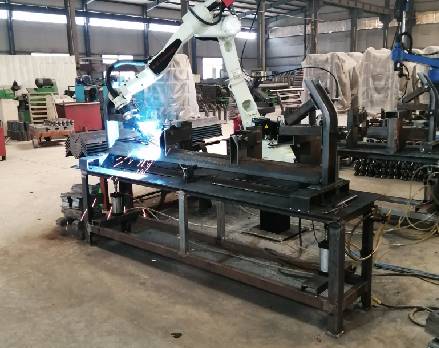 Afrikaans
Afrikaans  Albanian
Albanian  Amharic
Amharic  Arabic
Arabic  Armenian
Armenian  Azerbaijani
Azerbaijani  Basque
Basque  Belarusian
Belarusian  Bengali
Bengali  Bosnian
Bosnian  Bulgarian
Bulgarian  Catalan
Catalan  Cebuano
Cebuano  Corsican
Corsican  Croatian
Croatian  Czech
Czech  Danish
Danish  Dutch
Dutch  English
English  Esperanto
Esperanto  Estonian
Estonian  Finnish
Finnish  French
French  Frisian
Frisian  Galician
Galician  Georgian
Georgian  German
German  Greek
Greek  Gujarati
Gujarati  Haitian Creole
Haitian Creole  hausa
hausa  hawaiian
hawaiian  Hebrew
Hebrew  Hindi
Hindi  Miao
Miao  Hungarian
Hungarian  Icelandic
Icelandic  igbo
igbo  Indonesian
Indonesian  irish
irish  Italian
Italian  Japanese
Japanese  Javanese
Javanese  Kannada
Kannada  kazakh
kazakh  Khmer
Khmer  Rwandese
Rwandese  Korean
Korean  Kurdish
Kurdish  Kyrgyz
Kyrgyz  Lao
Lao  Latin
Latin  Latvian
Latvian  Lithuanian
Lithuanian  Luxembourgish
Luxembourgish  Macedonian
Macedonian  Malgashi
Malgashi  Malay
Malay  Malayalam
Malayalam  Maltese
Maltese  Maori
Maori  Marathi
Marathi  Mongolian
Mongolian  Myanmar
Myanmar  Nepali
Nepali  Norwegian
Norwegian  Norwegian
Norwegian  Occitan
Occitan  Pashto
Pashto  Persian
Persian  Polish
Polish  Portuguese
Portuguese  Punjabi
Punjabi  Romanian
Romanian  Russian
Russian  Samoan
Samoan  Scottish Gaelic
Scottish Gaelic  Serbian
Serbian  Sesotho
Sesotho  Shona
Shona  Sindhi
Sindhi  Sinhala
Sinhala  Slovak
Slovak  Slovenian
Slovenian  Somali
Somali  Spanish
Spanish  Sundanese
Sundanese  Swahili
Swahili  Swedish
Swedish  Tagalog
Tagalog  Tajik
Tajik  Tamil
Tamil  Tatar
Tatar  Telugu
Telugu  Thai
Thai  Turkish
Turkish  Turkmen
Turkmen  Ukrainian
Ukrainian  Urdu
Urdu  Uighur
Uighur  Uzbek
Uzbek  Vietnamese
Vietnamese  Welsh
Welsh  Bantu
Bantu  Yiddish
Yiddish  Yoruba
Yoruba  Zulu
Zulu Essential Parts of Conveyor Pulley Systems for Efficient Material Handling
Understanding Conveyor Pulley Components
Conveyor systems are essential in many industries, facilitating the movement of goods and materials efficiently. At the heart of these systems are conveyor pulleys, which play a crucial role in driving the conveyor belt and ensuring consistent operation. This article delves into the various components of conveyor pulleys, their functions, and their importance in the overall conveyor system.
What Are Conveyor Pulleys?
Conveyor pulleys are cylindrical devices that provide a means for the conveyor belt to move. They assist in maintaining proper belt tension, directing the belt's path, and allowing for its movement over the framework of the conveyor system. Pulleys are typically composed of a central shaft, a shell, and an end disc, and can vary in size depending on the specific applications and the load they are intended to support.
Types of Conveyor Pulleys
There are several types of conveyor pulleys, each designed for specific applications and functions
1. Drive Pulleys These pulleys are powered by a motor and drive the conveyor belt forward. Drive pulleys are usually located at the head of the conveyor system.
2. Tail Pulleys Positioned at the opposite end from drive pulleys, tail pulleys help to return the belt into a continuous loop. They generally provide tension to keep the belt in place and can also be used for belt tracking.
3. Snub Pulleys These pulleys alter the angle of the belt, usually to improve the grip on the drive pulley. Snub pulleys help to prevent slippage and enhance the overall efficiency of the conveyor system.
4. Take-Up Pulleys Used primarily for tensioning the conveyor belt, take-up pulleys ensure that the belt is taut and reduces the risk of sagging. This type of pulley is often adjustable, allowing for easy tensioning, which prolongs the life of the belt.
5. Return Pulleys These pulleys support the return side of the belt, keeping it aligned as it travels back to the drive section. They are integral to maintaining the system’s balance and function.
Key Components of Conveyor Pulleys
conveyor pulley components

The efficiency and reliability of conveyor pulleys depend on several key components
1. Shaft The shaft is a central element that supports the pulley. It connects the pulley to the motor and is designed to withstand the tension and stress exerted during operation.
2. Shell Typically constructed from steel or other durable materials, the shell is the outer surface of the pulley where the belt runs. It must have enough friction to maintain grip without excessive wear.
3. End Discs These components connect the shell to the shaft, providing structural integrity to the pulley. They also help in preventing material from getting caught inside the pulley assembly.
4. Bearings High-quality bearings allow the pulley to rotate smoothly and support heavy loads. They reduce friction and the risk of overheating, thereby enhancing the lifespan of the pulley.
5. Lagging Many pulleys feature a lagging material on their surface to enhance friction and protect the shell from wear and tear. This is especially important for drive pulleys, where grip is crucial to prevent slippage.
Importance of Conveyor Pulley Components
The proper functioning of conveyor pulleys is vital for the overall efficiency of the conveyor system. Any wear or malfunction in the pulley can lead to decreased productivity, increased energy consumption, and, ultimately, costly downtime. Regular inspection and maintenance of pulley components ensure the longevity of the system and optimize its performance.
In addition to efficiency, understanding the components of conveyor pulleys allows for better troubleshooting when issues arise. By knowing the role each component plays, operators can quickly identify problems and take corrective action to avoid extensive delays in operations.
Conclusion
Conveyor pulley components are fundamental to the effective operation of conveyor systems across various industries. They not only facilitate the movement of materials but also ensure safety and reliability in material handling. Understanding these components fosters better maintenance practices and enhances the overall performance of conveyor systems—essential for any modern manufacturing or logistics operation.
-
Revolutionizing Conveyor Reliability with Advanced Rubber Lagging PulleysNewsJul.22,2025
-
Powering Precision and Durability with Expert Manufacturers of Conveyor ComponentsNewsJul.22,2025
-
Optimizing Conveyor Systems with Advanced Conveyor AccessoriesNewsJul.22,2025
-
Maximize Conveyor Efficiency with Quality Conveyor Idler PulleysNewsJul.22,2025
-
Future-Proof Your Conveyor System with High-Performance Polyurethane RollerNewsJul.22,2025
-
Driving Efficiency Forward with Quality Idlers and RollersNewsJul.22,2025





























